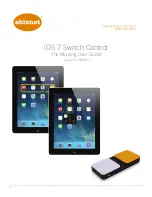
Section 3: Features
26
◆
Section 3: Features
DS1000/2000 Product Description
Operator Call Key
The last programmable key on an attendant telephone is permanently assigned as an Operator Call
Key. When the operator has Intercom calls waiting to be answered, the calls queue under this key.
The key winks (on) when calls are queued.
The Operator Call Key is a permanent assignment for all extensions assigned as operators. You can-
not change this assignment. Attendant Call Queuing is a permanent, non-programmable feature.
Feature Quick Steps
To answer a call flashing the Operator Call Key:
1.
Press the flashing Operator Call Key.
Attendant Position
Availability: All versions.
The attendant is the focal point for call processing within the sys-
tem. The system can have up to four attendants. In addition to the
features of a standard keyset, the attendant also has the following
unique capabilities (refer to the respective feature for details):
●
Attendant Call Queuing (page 25)
Incoming Intercom calls from co-workers queue for the attendant. The callers never hear busy
tone.
●
Barge In (Intrusion) (page 28)
The attendant can break into another extension user’s established call. This option is enabled
in the attendant’s Class of Service (COS 1).
●
Direct Trunk Access (page 44)
Direct Trunk Access lets the attendant user dial a code to access an individual trunk. This
option is enabled in the attendant’s Class of Service (COS 1).
●
Forced Trunk Disconnect (page 50)
In an emergency, the attendant can release (disconnect) another user’s active trunk call. This
option is enabled in the attendant’s Class of Service (COS 1).
●
Night Service / Night Ring (page 64)
An attendant with a Night key can put the system in the night mode. This option is enabled in
the attendant’s Class of Service (COS 1).
●
Removing Trunks and Extensions From Service (page 74)
The attendant can remove problem trunks from service —then return them to service once the
problem is corrected. This option is enabled because the attendant has Direct Trunk Access
enabled in their Class of Service (COS 1).
●
Trunk (Line) Queuing / Trunk Callback (page 93)
The attendant can Camp On (queue) for a busy trunk. This option is enabled in the attendant’s
Class of Service (COS 1).
The attendant should use a 34-Button Display or 34-Button Super Display Telephone. In addition,
most attendants should find a 24-Button or 110-Button Direct Station Selection (DSS) Console
helpful when processing calls.
The attendant is the system’s
call processing focal point.
Содержание DS1000
Страница 12: ...Section 1 Basics 4 Section 1 Basics DS1000 2000 Product Description...
Страница 118: ...Section 4 Specifications and Parts List 110 Section 4 Specifications and Parts List DS1000 2000 Product Description...
Страница 142: ...Index 6 Index DS1000 2000 Product Description...
Страница 144: ......
















































